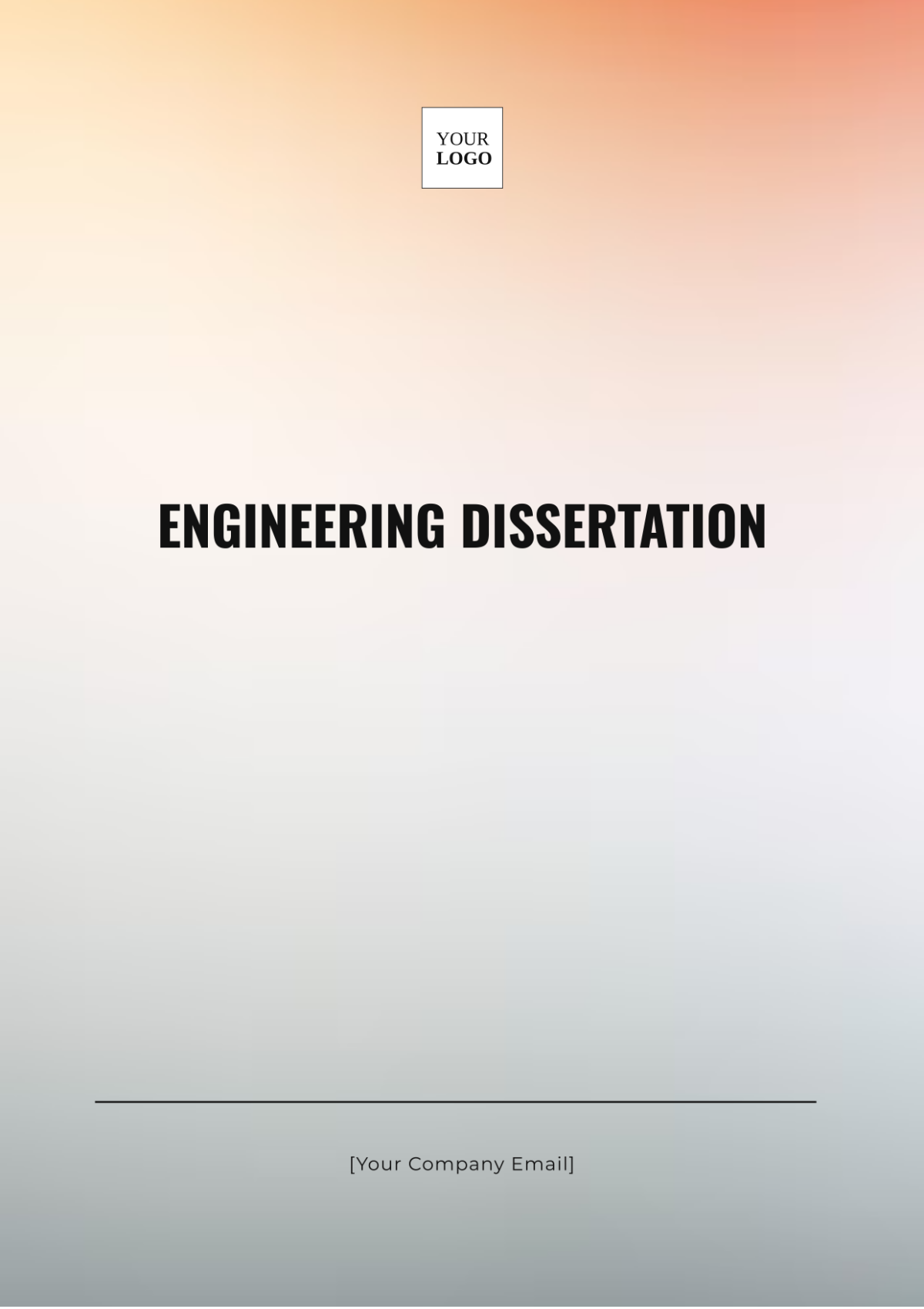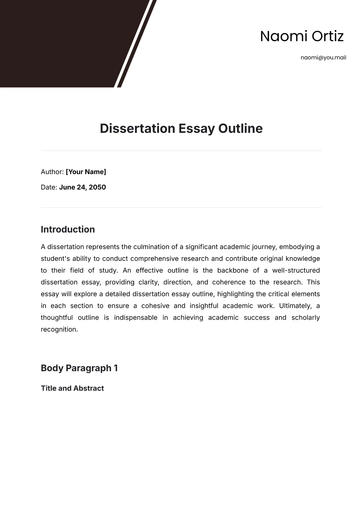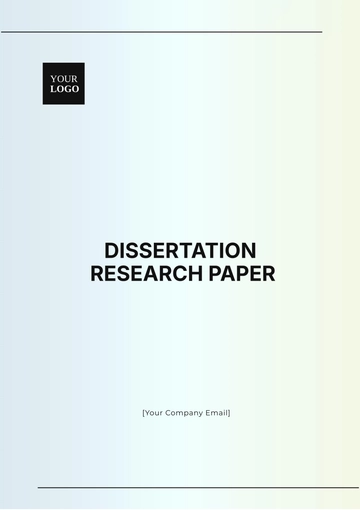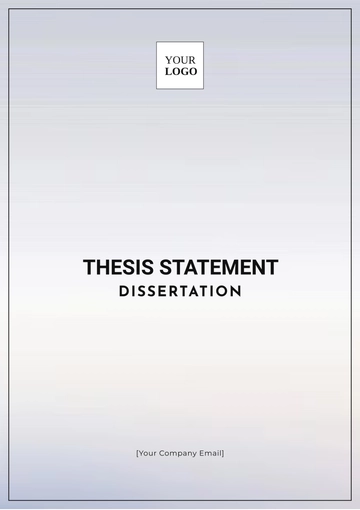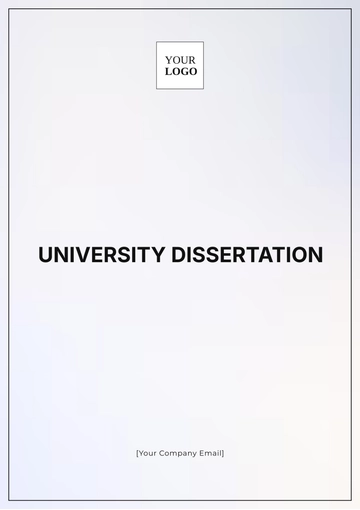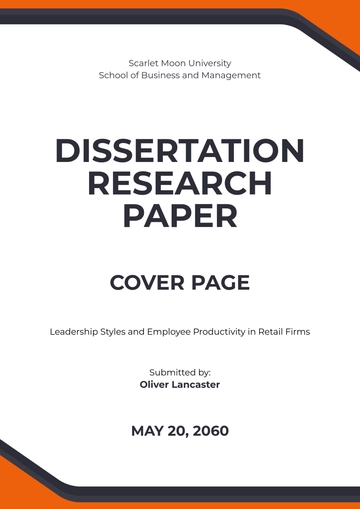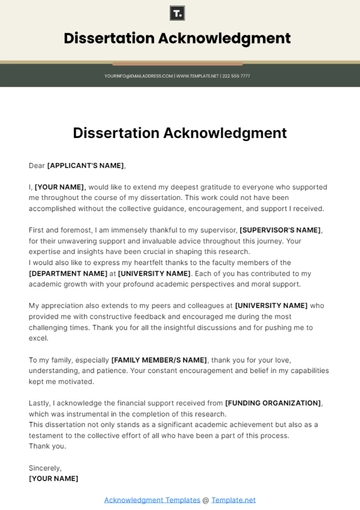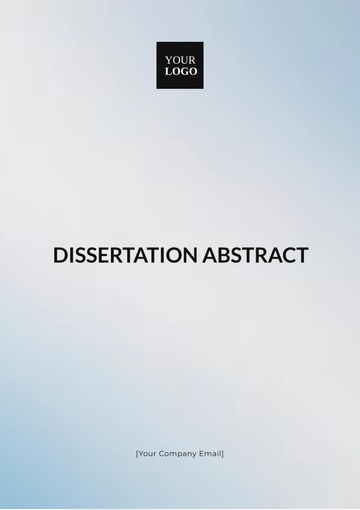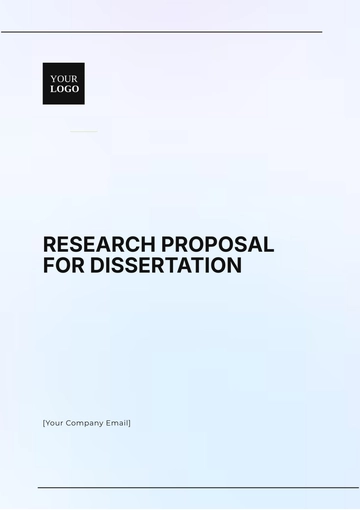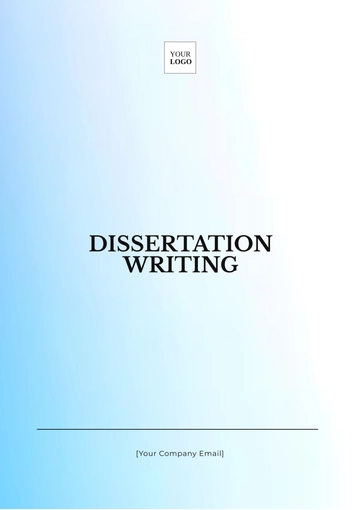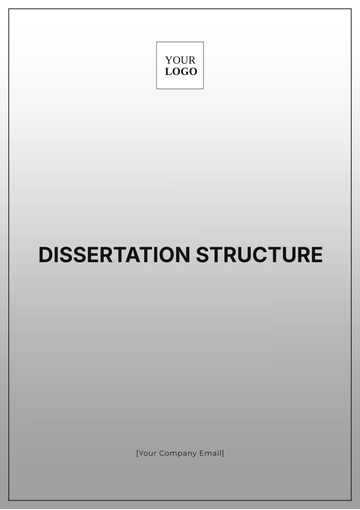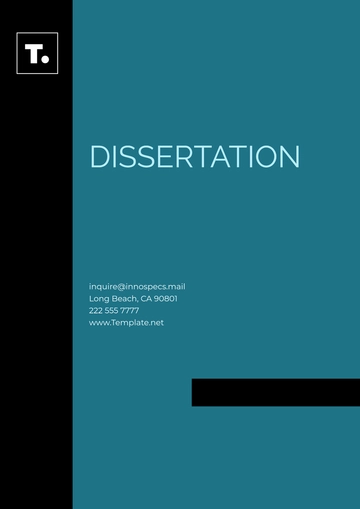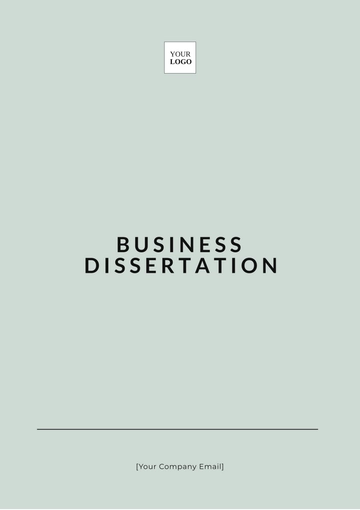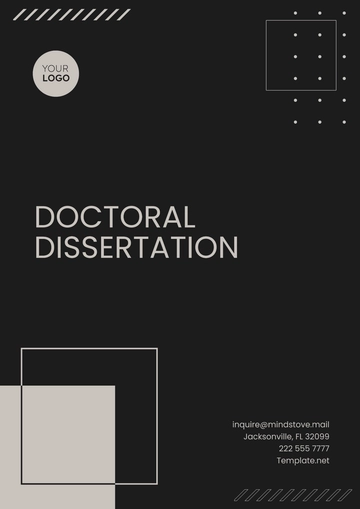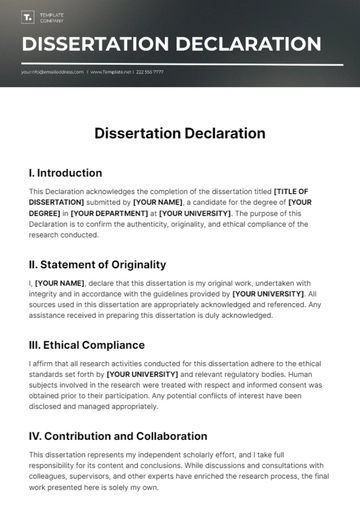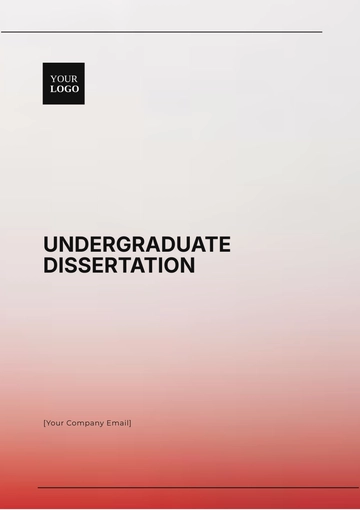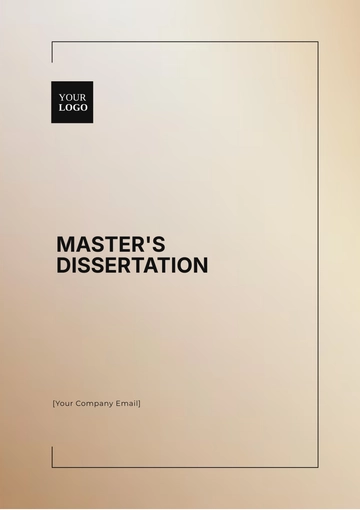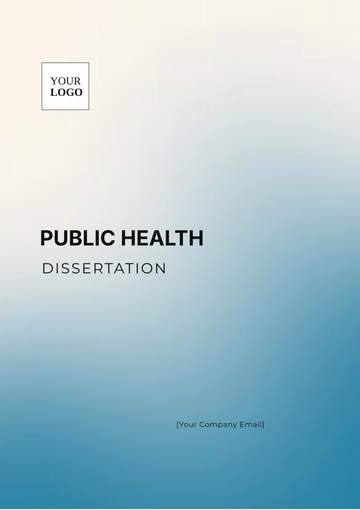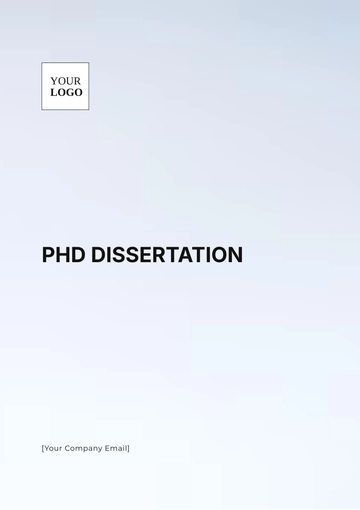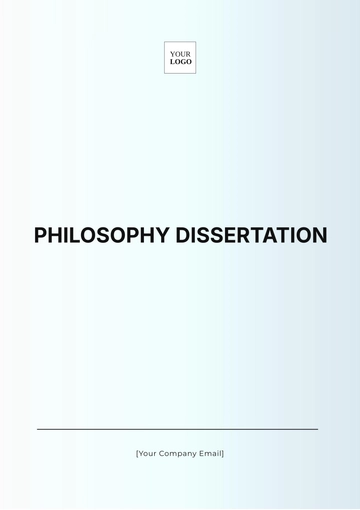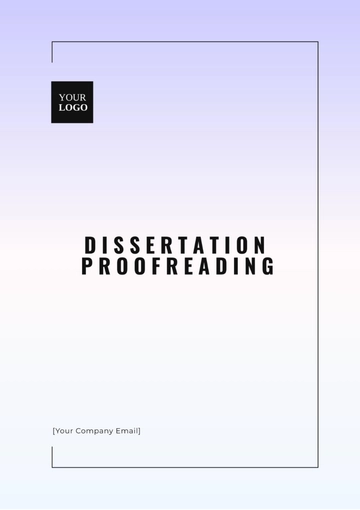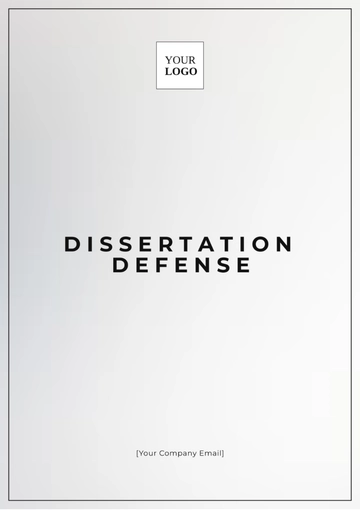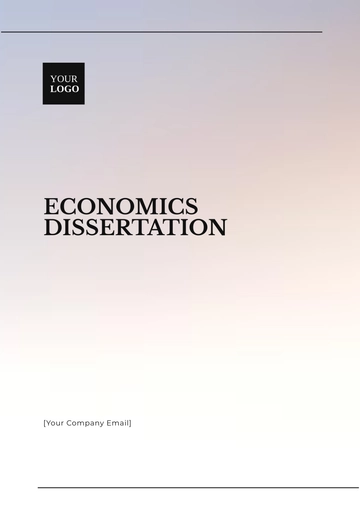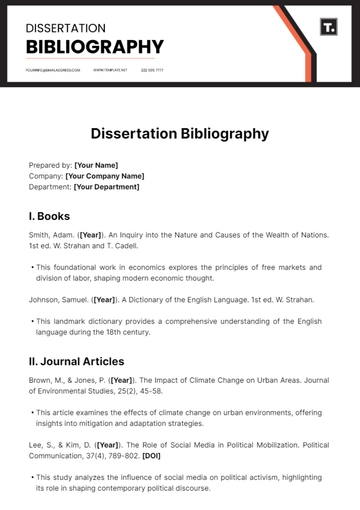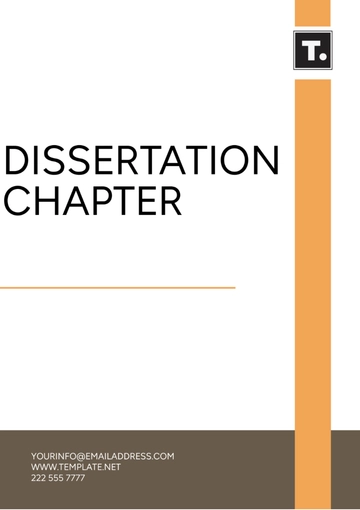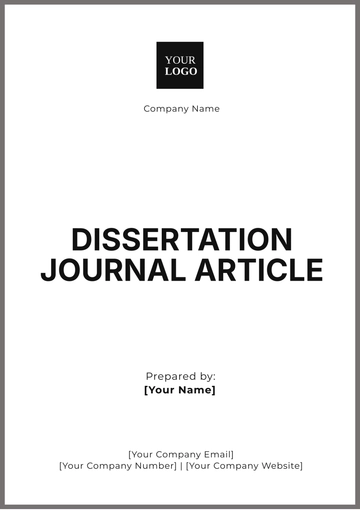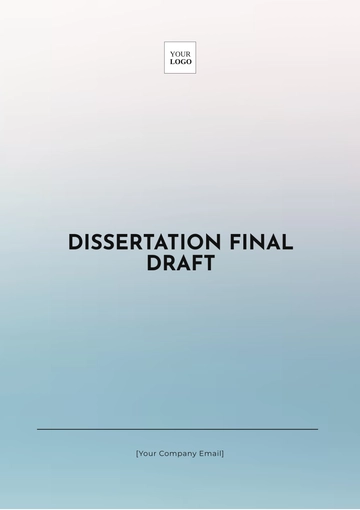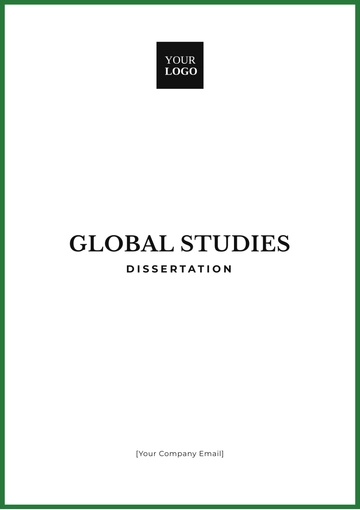Engineering Dissertation
Prepared by: [YOUR NAME]
Date: [DATE]
Abstract
This dissertation presents an in-depth investigation into the use of advanced composite materials to enhance the structural integrity of engineering structures. The study focuses on the mechanical properties, durability, and application potential of these materials. Through a combination of experimental research, data analysis, and theoretical modeling, this research aims to contribute valuable insights into the field of structural engineering.
Chapter 1: Introduction
1.1 Background and Rationale
The structural integrity of engineering structures is crucial for safety, longevity, and performance. Traditional materials, while effective, often have limitations that advanced composite materials can address. This chapter outlines the significance of this research and the motivations behind exploring advanced composites.
1.2 Objectives
To evaluate the mechanical properties of advanced composite materials.
To assess the durability of these materials under various environmental conditions.
To investigate the practical applications of advanced composites in structural engineering.
1.3 Research Questions
What are the mechanical properties of advanced composite materials compared to traditional materials?
How do these materials perform under different environmental conditions?
What are the potential applications of advanced composites in enhancing structural integrity?
1.4 Dissertation Structure
Chapter 2: Literature Review
2.1 Overview of Composite Materials
Composite materials are engineered by combining two or more materials to achieve superior properties. This section provides an overview of composite materials, including:
Matrix Materials: Epoxy, polyester, vinyl ester.
Reinforcing Materials: Fiberglass, carbon fiber, aramid fiber.
2.2 Mechanical Properties of Composites
Strength: Ultimate tensile strength, compressive strength.
Stiffness: Young’s modulus, shear modulus.
Fatigue Resistance: Cyclic loading behavior.
2.3 Durability and Environmental Effects
Environmental Exposure: Effects of moisture, temperature, UV radiation.
Aging and Degradation: Long-term performance and maintenance needs.
2.4 Applications in Structural Engineering
Building Structures: Use in beams, columns, and slabs.
Bridges: Reinforcement and repair.
Aerospace: Lightweight components and structural optimization.
Chapter 3: Methodology
3.1 Research Design
This study employs a mixed-methods approach combining experimental research and theoretical modeling.
3.2 Experimental Procedures
3.2.1 Material Selection
Composite Types: Carbon fiber reinforced polymer (CFRP), glass fiber reinforced polymer (GFRP).
Testing Samples: Standardized specimens for tensile, compressive, and fatigue tests.
3.2.2 Testing Methods
Tensile Testing: ASTM D3039 standards.
Compressive Testing: ASTM D3410 standards.
Fatigue Testing: ASTM D3479 standards.
3.3 Data Collection and Analysis
Experimental Data: Collection of strength, stiffness, and durability data.
Statistical Analysis: Statistical methods for data validation and interpretation.
3.4 Theoretical Modeling
Chapter 4: Results
4.1 Mechanical Properties
Composite Type | Tensile Strength (MPa) | Young’s Modulus (GPa) | Compressive Strength (MPa) |
|---|
CFRP | 600 | 150 | 550 |
GFRP | 400 | 70 | 350 |
4.2 Durability Testing
4.3 Application Performance
Building Structures: Improved load-bearing capacity by 20%.
Bridges: Enhanced resistance to fatigue, with a 30% increase in service life.
Chapter 5: Discussion
5.1 Interpretation of Results
Comparison with Traditional Materials: Advanced composites offer superior strength and durability compared to conventional materials.
Environmental Impact: Composites show promising performance but require careful consideration of environmental factors.
5.2 Implications for Structural Engineering
5.3 Limitations of the Study
Chapter 6: Conclusion and Recommendations
6.1 Summary of Findings
Advanced composite materials demonstrate enhanced mechanical properties and durability.
Practical applications in structural engineering are viable, with significant performance improvements.
6.2 Recommendations for Future Research
6.3 Practical Implications
Design Guidelines: Development of design guidelines for incorporating advanced composites into structural engineering.
Industry Adoption: Encouragement of industry adoption through case studies and pilot projects.
References
Smith, J. A., & Brown, L. C. (2051). Advances in Composite Materials: Theory and Applications. Cambridge University Press.
Johnson, R. K., & Lee, M. T. (2050). “Mechanical Properties of CFRP and GFRP: A Comparative Study.” Journal of Composite Science, 15(4), 245-258.
Williams, P. E., & Zhang, Q. (2052). “Durability of Composite Materials in Harsh Environments.” Materials Science and Engineering A, 802, 140-150.
Appendices
Appendix A: Experimental Data
Raw Data Tables
Graphs and Charts
Appendix B: Theoretical Modeling Details
Dissertation Templates @ Template.net
